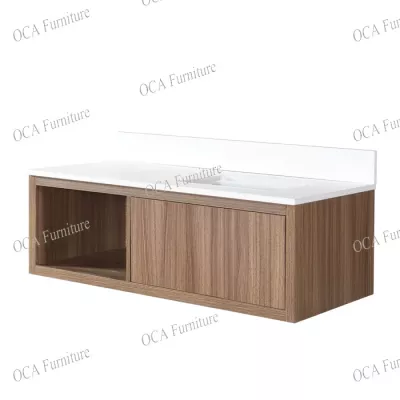Recently, according to foreign media reports, Australia's domestic travel has begun to show signs of recovery after months of border blockade and travel restrictions. This has made many hotel operators feel gratified.
Starting in March, the international border was closed, and Australia’s travel restrictions continued until the second half of 2020. Like other parts of the world, hotels and tourism have been severely affected, and the prospects of the wine tourism industry depend on the development of vaccines.
For half a year, the borders between Australia's eight states and many countries were strictly closed, completely interrupting national leisure and corporate tourism, and destroying the hotel industry.
Dean Long, Chief Executive Officer of the Accommodation Association of Australia, said: "Our industry has experienced a recession that has never been seen since 2008."
According to Michael Johnson, CEO of Australia Travel Accommodations, hotels near Australia (Central Business District) have basically come to a standstill. Due to the combined influence of "border blockade, no international tourists, no companies or major events," the performance across the country fell to record low levels.
City hotels hit hardest
According to Australian government statistics, during the economic downturn, tourism has been one of the worst-hit industries in the country. International tourists have fallen by 99.6%, from 750,000 in August 2019 to 3,030 a year later.
Among them, the urban market was hit hardest and recovered the slowest. Compared with last year, hotel room revenue in cities such as Sydney and Melbourne dropped by more than 70%. The occupancy rate in the Sydney area has dropped by 75%, and in recent months, the occupancy rate has been below 20%.
Marta Wheeldon, Group Finance Manager of View Hotels Group, said: The occupancy rate of the group's hotels even dropped to zero in some cases. It is reported that the group has hotels in Brisbane, Melbourne and Sydney.
In the past few months, as national occupancy rates have fallen to historical lows of 25% to 35%, occupancy rates in Sydney, Melbourne, Adelaide and Darwin have plummeted to 10% to 20%.
Wheeldo said that even though local travel restrictions in New South Wales were lifted for a while during the summer, hotels in major urban markets still suffered a devastating blow. Compared with other regional hotels, the oversupply of hotel rooms in Sydney, Melbourne and Brisbane is more serious.
Wheeldon said: "We not only missed the international travellers, but also missed the travel needs of many companies. For a long time, the hotel rooms were empty."
Festive cheers
Australia’s hoteliers expressed their hope that most state borders can be opened before Christmas. Previously, with the reopening of some of the domestic borders on November 23, separating Australia's two largest states, New South Wales and Victoria, Sydney has regained its leading position in the country's tourism market.
From the perspective of tourism practitioners, once demand picks up, domestic tourists will flow across the country. Tourism, as the industry most affected by the disaster, can immediately create job opportunities and stimulate economic growth.
As of press time, the region has shown signs of recovery. The overall hotel occupancy rate increased by 50% in October, and the occupancy rate in Sydney on weekends was 60%, 70% and 80%. But the operators also admitted that they cannot survive on weekends alone, because at least until August 2021, the cancellation rate of people's travel activities will exist. "
Data from HNN's parent company STR shows that although the government has booked hotels as quarantine centers for domestic and foreign tourists and mandatory 14-day quarantine, Sydney’s Australian dollar revenue per available room fell by 70.7% in September.
Regional differences are obvious, and vacation destinations have recovered significantly
Despite the huge impact on hotels in the CBD area of the country, some parts of New South Wales are beginning to usher in light. For example, the Blue Mountains and Hunter Valley have recently begun to attract many holiday tourists. "
STR Asia Pacific Manager Matthew Burke said: “The data for October 2020 shows a clear recovery driven by resorts outside the city. At the end of October, the transaction price of hotel rooms in Australia was 80% of the previous year. The capital city remains unchanged. At 40% of last year’s level, this shows that Australians are venturing out of the city and taking a vacation."
Regional hoteliers confirmed this growth.
Jordan Rodgers, general manager of Byron, a 92-suite luxury resort hotel located in Crystal Creek Resort on the northern coast of New South Wales, said that travelers in New South Wales are supporting their business.
He said: “Since the reopening on September 1 (a six-month renovation plan), we have seen the resort’s occupancy equal to the peak season summer vacation.” He added: “Because some other state borders are still facing Sydney People are not open to people, and many travelers still use the surrounding area as their main destination. The number of visits in the New South Wales region is also increasing significantly because of this."
Rogers said: "As far as the number of international visitors is concerned, the current loss of international tourists is not obvious, and domestic leisure travelers can make up for the decline in the number of tourists in the northern hemisphere."
But the situation in Queensland and New South Wales is completely different. Queensland has always relied heavily on international and domestic tourists, but at present, it is difficult to break international travel restrictions in the short term. On November 3, parts of Queensland were reopened to those living in New South Wales, but millions of tourists in Sydney and Victoria still rejected Queensland.
Melbourne's hotel industry has a long way to go
As the southern hemisphere summer vacation is approaching, hoteliers are eager to see changes in lock-in measures.
According to Australian tourism data, the hotel occupancy rate in October increased from a low of slightly higher than 10% in April to an average of 50.1%, but still lower than the 75% in October 2019, while the RevPAR for the same period rose from AUD 138.78 (USD 103.03) ) Fell to 81.67 Australian dollars (about 60.63 US dollars), a decrease of more than 41%.
Sources said Melbourne was hit hardest by the lockdown, especially after the most stringent four-month lockdown. STR data shows that the year-on-year occupancy rate of the city’s 4 million people fell by 64.6% in September to 26.9% in September, while RevPAR dropped by nearly 80% in the same period.
Stephen Ferguson, Chief Executive Officer of the Australian Hotel Association, said: “The industry urgently needs to relax restrictions. Due to the combined effects of bushfires and the pandemic, some Melbourne hotels have opened less than three months in 2020. Our hotelier Facing tremendous financial and emotional pressure, if it were not for the management agreement with the medical staff, it might be difficult for us to survive this pressure."
Wheeldon said: "We have seen many hotels start to reopen, but preliminary estimates we have to wait at least three months to see Melbourne's occupancy rate reach 30% to 40%. All in all, Melbourne's hotel industry still has a long way to go. go."
In the hearts of every operator, they are well aware that it is impossible for Australia to fully recover before overseas travel resumes. Even by this moment next year, most capital cities are unlikely to reach an occupancy rate of 50% to 60% again.







